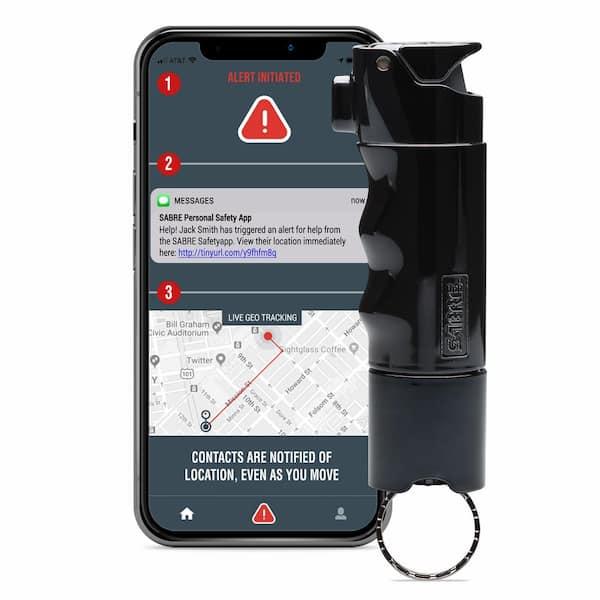Table of Contents
- Understanding the Legal Considerations of Carrying Pepper Spray
- Choosing the Right Pepper Spray for Your Personal Safety Needs
- Effective Techniques for Using Pepper Spray in Emergency Situations
- Storing and Maintaining Your Pepper Spray for Optimal Performance
- In Retrospect
Understanding the Legal Considerations of Carrying Pepper Spray
Before purchasing or carrying pepper spray, it is crucial to familiarize yourself with the specific laws and regulations in your jurisdiction. These rules vary widely and can impact everything from the type of pepper spray allowed to the permissible size and concentration. Some regions may require a permit or have age restrictions, while others prohibit carrying pepper spray altogether in certain public places such as schools, government buildings, or airplanes. Understanding these nuances not only ensures you stay compliant with the law but also helps you avoid potential legal troubles that can arise from improper possession or use.
When preparing to incorporate pepper spray into your emergency safety plan, consider these important factors:
- Local Legislation: Always research and verify the local regulations where you live and where you travel frequently.
- Carrier Restrictions: Some laws regulate how pepper spray must be stored or carried, such as in a sealed container or on your person.
- Usage Guidelines: Pepper spray should only be used in self-defense situations; improper or excessive use can lead to criminal charges.
- Training & Awareness: Educate yourself on the proper handling and deployment of pepper spray to maximize its effectiveness and safety.
Choosing the Right Pepper Spray for Your Personal Safety Needs
When selecting pepper spray for your personal safety, it’s essential to consider effectiveness, ease of use, and legal restrictions in your area. Look for a spray that offers a sufficient concentration of oleoresin capsicum (OC), typically between 1.0% and 2.0%, which delivers reliable stopping power without posing excessive risk of permanent harm. Additionally, opt for a design that suits your lifestyle-compact keychain models are ideal for everyday carry, while larger canisters may be better suited for home defense. Familiarize yourself with the spray’s range and spray pattern; stream sprays provide accuracy, fog sprays cover wider areas but can cause self-contamination, and gel sprays reduce blowback and wind drift.
- Check for user-friendly features: Easy grip, quick-access mechanisms, and clear safety instructions.
- Consider additional tools: Some models include built-in stun guns or bright LED lights for enhanced protection.
- Verify regulations: Ensure your chosen spray complies with local laws to avoid legal complications.
- Test your confidence: Practice handling without discharging to build familiarity and reaction speed.
Effective Techniques for Using Pepper Spray in Emergency Situations
When the need arises to deploy pepper spray, immediate clarity and composure are critical. Prior to use, always ensure you have a clear target to avoid accidental exposure or affecting bystanders. Aim for the attacker’s face-particularly the eyes, nose, and mouth-to maximize the incapacitating effect. Remember, pepper spray works best at close range, typically between 3 to 10 feet. Practicing controlled bursts rather than continuous spraying will conserve your canister, allowing multiple uses if necessary. Maintain a firm grip on your spray and be prepared to move away quickly after deployment to maximize your safety.
In high-stress moments, fine motor skills can diminish, so training and familiarity with your pepper spray device are essential. Consider these strategies for optimal effectiveness:
- Carry your spray in an accessible location, such as a wristlet, keychain holster, or pocket with quick-release mechanisms.
- Practice drawing and aiming in a safe environment to build muscle memory.
- Always check the expiration date and replace the canister as needed to ensure potency.
- Be aware of wind direction when outside to avoid blowback.
Storing and Maintaining Your Pepper Spray for Optimal Performance
Proper storage is crucial to ensure your pepper spray remains effective when you need it most. Keep your pepper spray in a cool, dry place away from direct sunlight and extreme temperatures, as heat can cause the canister to malfunction or burst. Consider storing it in easily accessible locations such as your purse, car glove compartment, or a dedicated safety drawer at home. Avoid carrying pepper spray in places prone to friction or impact, like the back pocket, where accidental discharge or damage may occur.
Maintaining your pepper spray involves regularly checking the expiration date and inspecting the canister for any signs of damage or leakage. Here are some tips to keep your device in top condition:
- Test the spray periodically: Perform a short test spray in a safe, open area to confirm proper function, but only as recommended by the manufacturer.
- Clean the nozzle: Use a dry cloth to wipe away any dirt or residue that could obstruct the spray pattern.
- Replace before expiry: Pepper spray loses potency over time; replace cans every 2-4 years depending on the brand.
By prioritizing proper storage and routine maintenance, you can trust your pepper spray to perform reliably when your safety depends on it.
In Retrospect
Incorporating pepper spray into your emergency planning toolkit can be a powerful step toward enhancing your personal safety. Remember, while pepper spray is an effective self-defense tool, it works best when combined with awareness, proper training, and a well-thought-out emergency plan. Always familiarize yourself with local laws and regulations to ensure responsible use. By staying prepared and informed, you can boost your confidence and readiness to handle unexpected situations with greater ease. Stay safe, stay vigilant, and empower yourself with the right knowledge and tools.Check Our Other Blogs
- StunGun – Your Trusted Source for Stun Guns, Laws, and Self-Defense Tips
- PepperSprayLaws – Your Trusted Resource for Pepper Spray Information
- StunGunLaws – Your Trusted Guide to Stun Gun Legality and Safety




